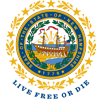In the News
Contact
Remote learning: Parents and teachers should prep for a marathon, not a sprint
By Amanda Bastoni, Ed.D

Remote learning: Parents and teachers should prep for a marathon, not a sprint
In anticipation of the first week of remote learning, I turned our monthly chalkboard calendar into a daily schedule. I anticipated some hurdles, and the need to tweak the schedule along the way. As a former teacher, I believed this would keep my 16-year-old son learning, my three-year-old daughter engaged, and leave time for my husband, pets, meals, and all of my work obligations.
By the afternoon of Day 2, it all fell apart.
Had you walked into my house that afternoon, you would have found my daughter, naked jumping up and down on the couch. My son had already played more than five hours of Xbox. My husband, a woodworking teacher, was trying to respond to a student while thawing hamburger for dinner. I was trying to let the dog out without the sound being heard during my next Zoom meeting, for which I was already late.
The new realities of remote learning were setting in, and a schedule was not saving us.
I am extremely proud of the amazing work being done across our state by educators, administrators, and the Department of Education. As Vice President Mike Pence said, New Hampshire is “setting the pace” for transitioning to remote learning.
But we should be setting a marathon pace, one that everyone can keep up with. When I train for a long race, I start by understanding the distance ahead of me. We need to acknowledge that the task ahead of us is herculean.
The first week of remote learning showed me that I will not be able to achieve all of the same goals or deadlines I had before COVID-19.
Educators need to understand that students aren’t going to absorb information at the same rate. Writing an essay about Hamlet might not feel as relevant when your parents are stressed about how to pay the mortgage, you’re worried your grandparents might get sick, and you have to keep your two younger siblings entertained without leaving the house.
Administrators can no longer help teachers by removing a disruptive student from a class, but they can offer teachers support by recognizing that working at home is going to look much different than working in the school building. The same time frames and schedules might not work. Team meetings might need to be held after younger kids are fed and in bed.
Parents stressed by the health and financial implications of this crisis might not have the energy to also keep them engaged in online activities. Parents are trying to create totally new schedules, systems, and structures. Misunderstandings and miscommunications are going to happen. Parents need help. Keep them in the loop. Any support we can give to help them manage remote learning will be beneficial and ultimately appreciated.
Students need support too. Many will experience serious depression and loneliness during remote learning. Teachers, coaches, and the school building itself all provided many students with a sense of stability and security. One Granite State teacher is helping kids cope with “office hours.” Positive teacher-student relationships improve learning for all, especially during stressful times. By creating individual check-ins or providing time to touch base with students, teachers can find out why students might be falling behind and offer new strategies.
Slowing down, or training for remote learning at a marathon pace, is the same message Italian educators are sharing with the world. Less is more.
As Education Commissioner Edelblut adds, “Teachers are learning a new method of instruction, parents are learning, and students are learning a new way to learn. This is unchartered territory, so parents should know that it’s not going to be perfect. Mistakes are part of the learning experience.”
For the past three years more than 500 educators across New Hampshire have partnered with educational non-profit, CAST (www.cast.org) and the Department of Education to design curriculum and create innovative learning environments using the framework of Universal Design for Learning (UDL). The goal has been to reduce barriers to learning and prepare all learners for the future. The framework of UDL can be used to design remote learning environments too.
Relevance: “We know students do better when learning is relevant,” said Bill Wilmot, former teacher, principal, and UDL expert. Now is the perfect time to weave current events - like the COVID-19 pandemic - into assignments and lessons. “Students are already talking and thinking about it, so why not leverage their interest to fuel learning,” he added.
Flexibility: Students can and will learn remotely. While we are transitioning to a new Remote Learning reality, let’s make sure we aren’t relying on school-based structures. Being flexible allows parents and educators to thoughtfully develop new routines and structures that minimize long-term setbacks and ensure all students can engage and feel included.
Reflection: CAST has opened the doors to Learning Designed, an online community where New Hampshire educators can access a variety of resources. To join, go to learningdesigned.org, and join the New Hampshire Department of Education Group Page using the membership code: 3324-1584222860.
Remote Learning will be a marathon. Don’t burn yourself out in the first mile.
Amanda Bastoni, Ed.D is an Educational Research Scientist at CAST.




